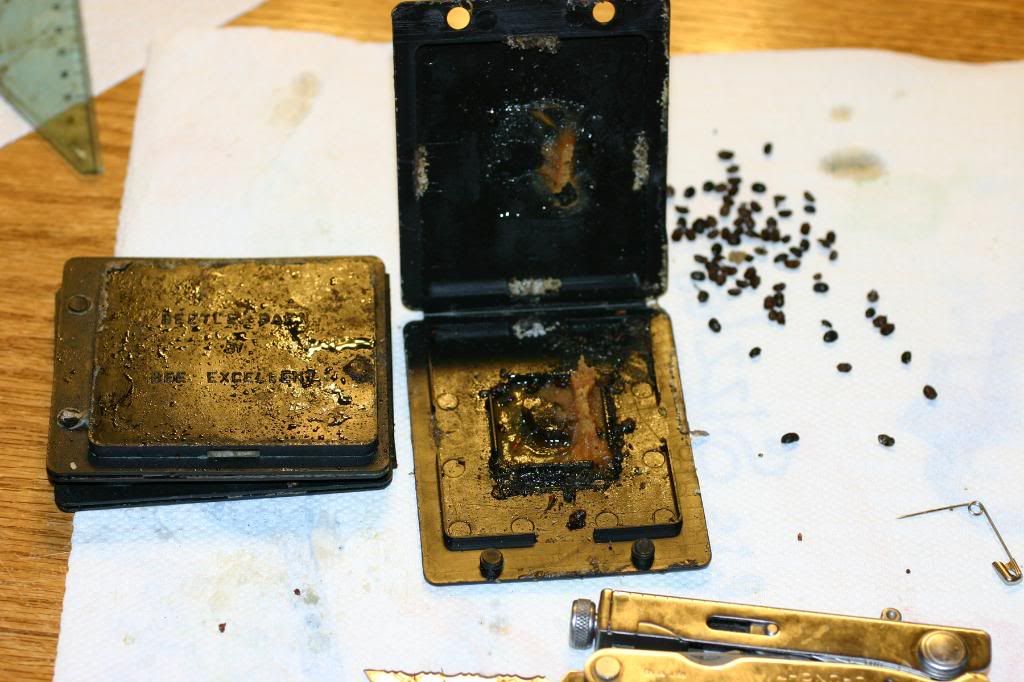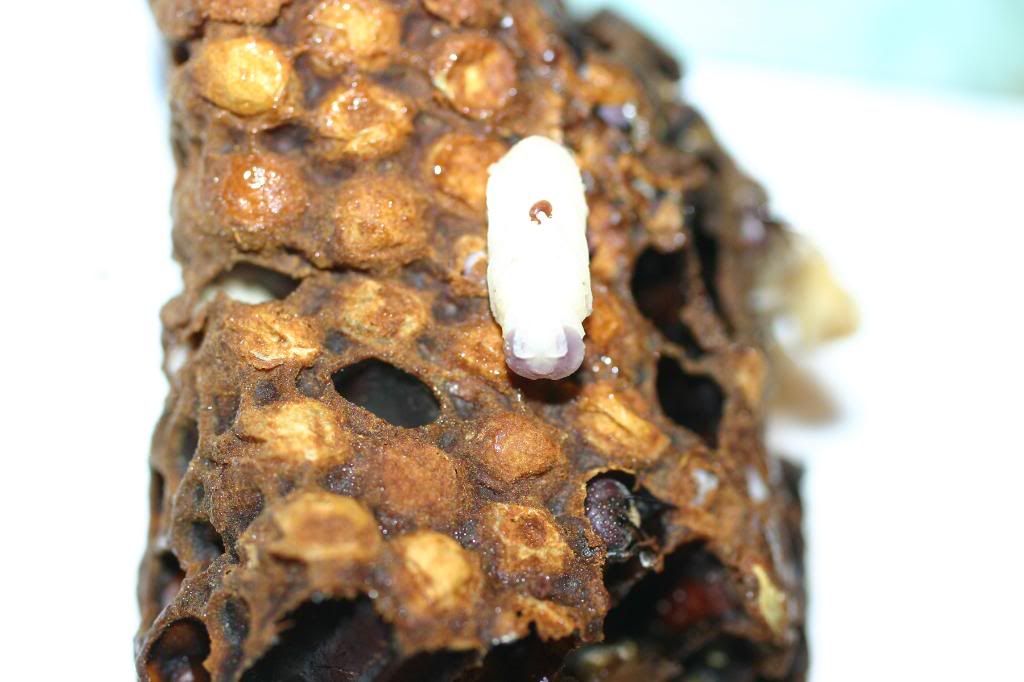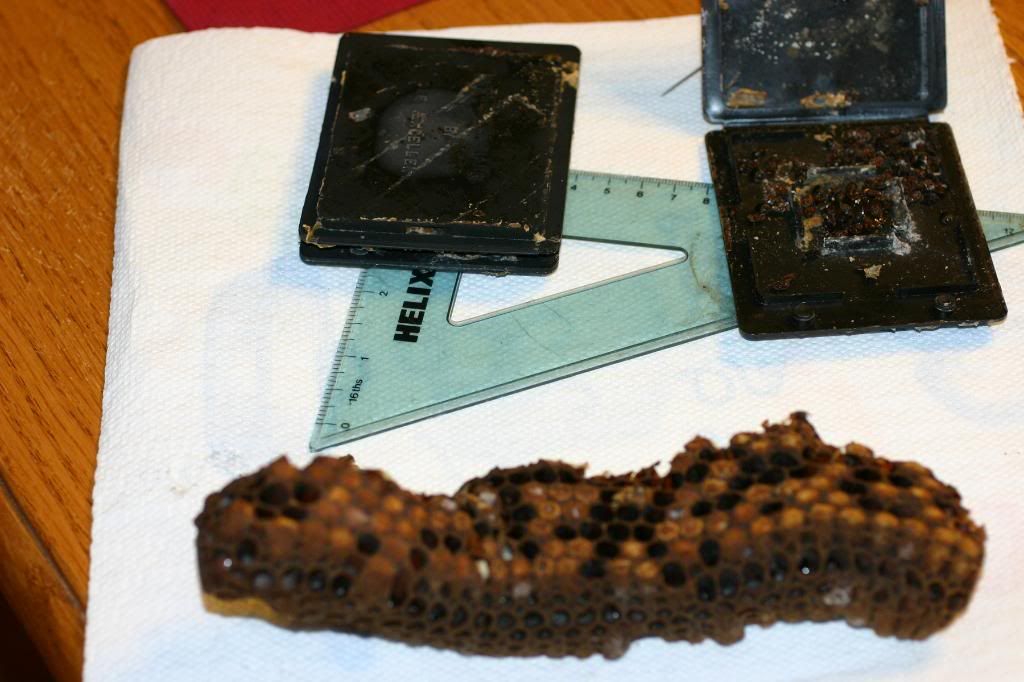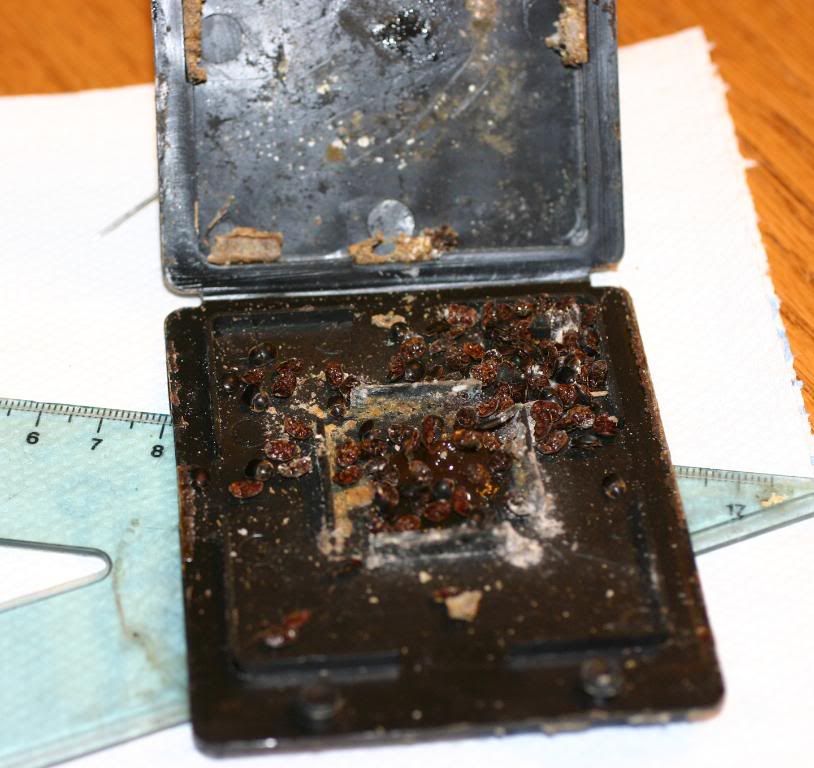Last weekend during my inspection I removed the traps my bee inspector gave me. He helped me with the Small hive beetle problem by providing me with baited traps for each hive, made by Bee excellent (local beekeeper that seems not to have anything online). The trap is a variation of the trap build by Fatbeeman (catch his video in this previous post).
I also removed comb cells that the bees usually build at the bottom of the frames in the deep body. Since it is natural comb, most of the drone cells are located here.
Below are the three traps and some of the brood cells. They have been in my freezer since the inspection. The freezing will kill all the critters. Unfortunately, it kills bad critters and the bees, but sacrificing drones is a good way to inspect and remove mites. The mites prefer to nest and reproduce in drone cells. If you get a chance to perform a similar inspection, make sure that you only remove enough cells that you can inspect with in a few minutes. They thaw out rather quickly and become rather juice and messy.
 As far as mites, things could not look better. Only brood in two cells had Mites in them. The best way to open the cells is to break them in half over a white paper towel, and open by hand and empty what ever cells don’t break open. Below is a section of cells split open.
As far as mites, things could not look better. Only brood in two cells had Mites in them. The best way to open the cells is to break them in half over a white paper towel, and open by hand and empty what ever cells don’t break open. Below is a section of cells split open. and one under
and one under Here is brood in different stages of development. The white ones that don't look like bees at all will turn into a mushy puddle of goo if you don't move them along fast. The one all the way on the right was the second infested mite I found. I’m very excited with the lack of mites. It means my natural methods may be working. I'm using powder sugar and tobacco leaves in the smoker. A new batch of tobacco is sprouting at this very moment.
Here is brood in different stages of development. The white ones that don't look like bees at all will turn into a mushy puddle of goo if you don't move them along fast. The one all the way on the right was the second infested mite I found. I’m very excited with the lack of mites. It means my natural methods may be working. I'm using powder sugar and tobacco leaves in the smoker. A new batch of tobacco is sprouting at this very moment.





No comments:
Post a Comment